
Welcome to the biannual Nebraska Department of Agriculture (NDA) Pesticide, Fertilizer and Noxious Weed Newsletter. The newsletter is only distributed electronically, and targets private and commercial/noncommercial applicators, pesticide dealers, as well as interested persons from government, university, and pesticide industry.
This newsletter is available in other formats for persons with disabilities upon request. For an alternate format or for additional information on topics in this publication, please call the Nebraska Department of Agriculture at 402-471-2351. TDD users can contact the Department by first calling the Nebraska Relay System. Telephone 800-833-7352 and asking the operator to call 402-471-2351.
Mention of product names or companies does not constitute an official endorsement by the State of Nebraska, nor does it assign any preference to the exclusion of others not mentioned.
RUP Dicamba Update/Reminder
By Libby Walsh, Pesticide and Fertilizer Program Manager
The active ingredient dicamba has been around since 1967 and is a selective herbicide for broadleaf weeds. For those who have been following along for the last eight years, though, it has been a topic of contention. Restricted use dicamba for over-the-top (OTT) use first came on the scene in 2017 with dicamba-tolerant soybean and cotton and has had a number of label vacaturs and re-registrations since. With each new registration came new and stricter label requirements, from recording keeping and training requirements in 2017 to application cut-off dates in 2020. The 2020 registrations were originally granted for five years and set to expire in December 2025.That all changed on Feb. 6, 2024, when a ruling by the U.S. District Court of Arizona vacated the 2020 registrations for OTT dicamba products - XtendiMax, Engenia, and Tavium. Given the timing of the vacatur, an Existing Stocks Order was issued by the EPA and products were allowed for distribution and use in the 2024 growing season. Currently the three OTT dicamba product labels have been resubmitted to the EPA for consideration for registration. Draft labels of each product were open for public comment this fall and are under EPA’s review processes. As of today, none of the OTT dicamba products are registered or labeled for use in 2025, nor does it appear that there will be a decision reached before the 2025 planting season.
With a strong possibility of no OTT dicamba product being available this coming year, it is important to remember that it is a violation of both state and federal law to use a pesticide in a manner not specified on the label. Using any dicamba products on sites and crops not listed on the label is illegal. No other dicamba herbicide label allows for use in-season over the top once soybean plants have emerged, up to pre-harvest desiccation. Violations of the Nebraska Pesticide Act could result in a fine of up to $5,000 per violation, while the Federal Insecticide, Fungicide and Rodenticide Act (FIFRA) allows for fines exceeding $7,500 per violation.
NDA and Extension offices have received calls asking what can be done if there is knowledge of a violation and it’s reported to NDA. During a complaint investigation, tissue samples are taken and submitted for residue analysis. Typical drift complaints during the growing season generally have residues between 4-10 parts per billion (ppb). A direct application of dicamba will generally result in residues of 750 ppb or higher. Therefore, it is easy to prove a direct application took place with dicamba residues this high when the plant is unaffected. Under federal law tissue samples are an option for NDA to collect from any agricultural field where NDA believes a misuse may have occurred.
In order to keep dicamba in the toolbox for the future, we must all be good stewards of the environment to ensure future use of these tools.
Questions about the RUP dicamba labels can be directed to Libby Walsh at 402-471-6882, or by email at elizabeth.smith@nebraska.gov.
Drones and the Nebraska Pesticide Act
Written by University of Nebraska Extension and NDA, this recently published article covers drone requirements and pesticide applicator requirements in Nebraska.
By Holly Hillebran, Certification and Worker Protection Specialist
Private Applicators
This year, as in years past, private applicators will receive a barcoded letter This letter will include a section to update your address, phone number, or any other information needing to be changed. Private applicators will need to bring this to an in-person class and turn it in at the end of the class to the Extension Educator. If you are not able to attend an in-person class, you can recertify online at Private Pesticide Safety Training
If a private applicator holds category 11 (fumigation), they will be able to recertify online after taking the regular private applicator certification course online. Or they can attend a commercial/noncommercial in-person to recertify category 11 (see dates and locations in the schedules section below). If a private applicator holds the 01a (soil fumigation) category, they will have to retest for this as we do not have a recertification course for this category.
Commercial and Noncommercial Applicators
This year, commercial and noncommercial applicators who need to be recertified by the spring of 2025 will need to bring their blue applicator license to an in-person class. Instead of using bubble forms, we’ll scan the QR code located on each applicator license. At the end of each morning and afternoon session, our proctors will scan the license to document a completed session. Our proctors will also have a sign-in sheet for applicators who need to update addresses, phone numbers, or other information. Applicators can also contact us ahead of time with information updates. Applicators who have a change in contact information or who have lost their license can call or email us before recertification season ramps up (402-471-2351; agr.pesticide@nebraska.gov).
Commercial and noncommercial applicators wishing to recertify online can go to Pesticide Safety Education Program, however the official link won’t be posted by UNL until after Jan. 1.
In-person dates and locations for recertifying a license, training to obtain an initial license, and testing-only to add a category or obtain an initial license can be found in the schedules section below.
Worker Protection Standard (WPS) and the Application Exclusion Zone (AEZ) Rule
On Oct. 2, 2024, the EPA announced their final ruling to restore the pesticide Application Exclusion Zone (AEZ) requirements under the 2015 Agricultural Worker Protection Standards (WPS). The AEZ refers to the area surrounding outdoor pesticide application equipment where people are prohibited while pesticides are applied. The AEZ only exists during the application, moves with the equipment during application, and can extend outside of an agricultural establishment (e.g., to school grounds, residential neighborhoods). This final 2024 rule reinstates several 2015 WPS provisions protecting farmworkers and by-standers. A few of these are below:
- The AEZ suspension requirement will apply beyond the boundaries of the agricultural establishment.
- The AEZ suspension requirement will apply to easements on the establishments.
- The AEZ distance for ground based applications will be:
A. 25 feet for applications with medium or larger droplets when sprayed from a height greater than 12 inches from the soil surface or planting medium.
B. 100 feet for applications with fine droplets.
The AEZ for aerial, air blast, fumigation, misting, and fogging applications remains at 100 feet.
This final ruling also includes two revisions that should help provide clarity and flexibility for growers and farming families.
- An "immediate family exemption" that allows farm owners and their family to remain inside enclosed structures or homes during pesticide application. This exemption is limited to farming families.
- A clarification that suspended pesticide applications can resume only after people leace the AEZ.
Learn more about AEZ requirements and the Worker Protection Standard.
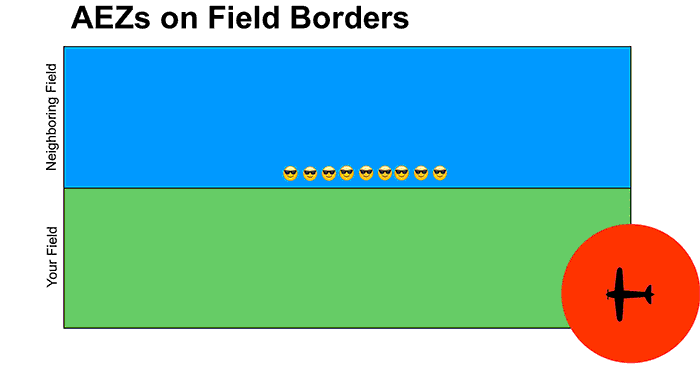
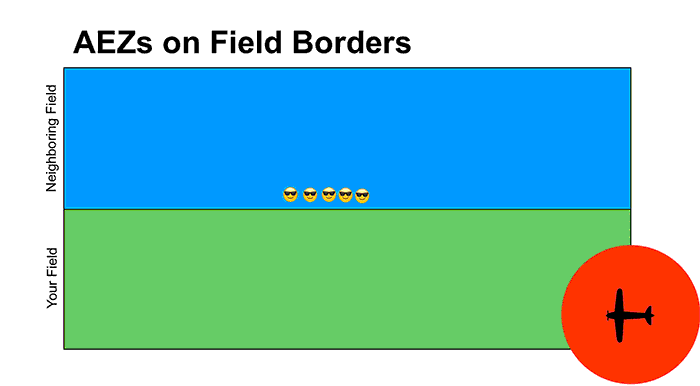
Paraquat Dichloride Training for Certified Applicators
Certified applicators must successfully complete an EPA-approved training program before mixing, loading, and/or applying paraquat. The training provides important information about paraquat’s toxicity, label requirements and restrictions, and the consequences of misuse. The training was developed by paraquat manufacturers as part of EPA’s 2016 risk mitigation requirements and has been approved by the EPA. The EPA-approved training module can be accessed from either of the two sources found here, along with frequently asked questions about this training and certification.
Commercial and Non-Commercial
2025 Recertification/Renewal Meetings
(No NDA Exams Offered)
2025 Initial Certification Meetings
(UNL or Association Training plus NDA Exam)
Walk-in Testing Options
(No training; just exams for initial licenses, retesting, or adding categories)
Private Applicator
2025 Recertification Options
Information for both online or in-person training options are available at pested.unl.edu
Endangered Species Protection: Coming to a Label Near You
By Craig Romary, Environmental Programs Specialist
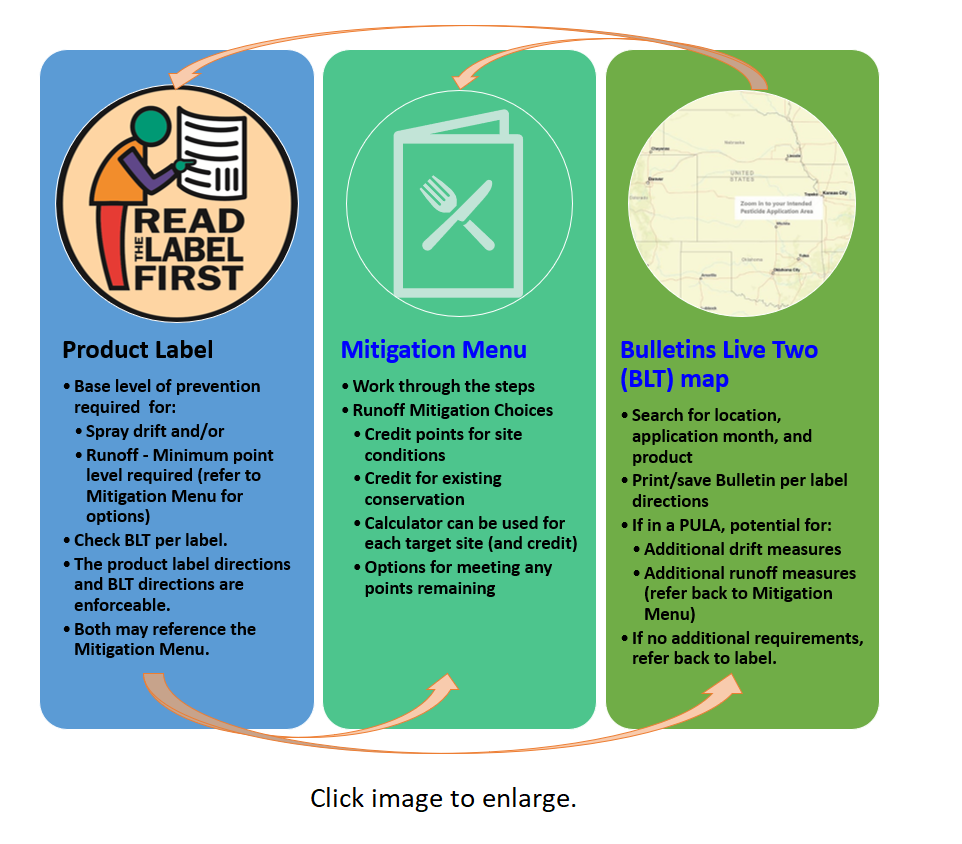 You’ve likely heard about national changes coming to pesticide product labels to protect federally listed threatened and endangered species (listed species) from pesticide impacts. The information below is intended to help explain what has happened, what likely will happen, and how to comply with new label language for the protection of Nebraska’s listed species. Recently registered products are provided as an example; these are the first products to have gone through the registration process and have the protections described below on the label.
You’ve likely heard about national changes coming to pesticide product labels to protect federally listed threatened and endangered species (listed species) from pesticide impacts. The information below is intended to help explain what has happened, what likely will happen, and how to comply with new label language for the protection of Nebraska’s listed species. Recently registered products are provided as an example; these are the first products to have gone through the registration process and have the protections described below on the label.
Background
For decades, the EPA tried to comply with the Endangered Species Act (ESA) on a pesticide-by-pesticide, species-by-species basis. However, because this approach is very slow and costly, it resulted in litigation against the agency and uncertainty for users about the continued availability of many pesticides. At the beginning of 2021, the EPA faced almost two dozen lawsuits covering thousands of pesticide products for failure to meet ESA obligations for pesticides. Some of these lawsuits resulted in courts removing pesticides from the market until the EPA ensured the pesticides complied with the ESA. As a result, the EPA developed new strategies to provide protections for hundreds of listed species up front as each product goes through registration or registration review. This allows the EPA to protect listed species much faster while ensuring products stay on the market for growers. Currently, these new protection strategies only target conventional herbicides, insecticides, rodenticides, and fungicides with agriculture uses. However, similar changes are expected to pesticide products used outdoors.
The ESA strategies themselves are not regulatory but rather the method for which the EPA will register active ingredients. The bulletins and pesticide label, summarized below, are regulatory documents that need to be followed to be in compliance.
How this will affect you:
Your product label may require a minimum level of mitigation measures (or actions) to protect “generalist” listed species most anywhere in the state. These are listed species that don’t have specific, definable locations and that rely on a variety of plants or animals for survival. The measures or restrictions will be required adjacent to any habitat that is not considered “managed land” to reduce risks to listed species and the plants, insects, or animals they depend on. There will be measures for reducing spray drift to these habitats and measures for reducing pesticides in runoff water adjacent to these habitats.
- For spray drift, there may be minimum buffers between the application area and the protected habitat. Buffers can be reduced using certain spray equipment (ex: hooded sprayers) or with the presence of windbreaks.
- For runoff, mitigation measures will need to add up to a point level specified on the label (this level will usually be less than described in the following paragraphs). The label will reference a website for the Mitigation Menu, which will help you determine what is needed. It has a step-by-step process for determining whether runoff mitigations are needed and, if so, the options available to you. There are “relief points” or credits that vary based on site conditions (soil type, slope, and rainfall) and whether you participate in a qualified conservation program or follow recommendations from a technical specialist. It could be that the relief points for your target site meet or exceed the points required, such that no additional mitigation is needed. The Mitigation Menu will have descriptions of each measure, how they can be used, and the minimum standard required for each one. Many of the mitigation/conservation measures will be familiar to you, and you will get credit for measures you are already implementing that meet the standard. Keeping records of your mitigation actions will also count toward the points needed for runoff mitigation. There is a calculator to keep track of the measures and credits for each target site for this purpose.
In addition to the restrictions found on the product label, there will be a label statement requiring the user to check the Bulletins Live! Two (or BLT) map to determine if your target site is in a Pesticide Use Limitation Area (or PULA) that requires additional restrictions. You’ll need to check this map within 6 months prior to your application. These areas (PULAs) may require additional drift and/or runoff measures adjacent to habitats, depending on the active ingredient/product. Not all active ingredients/products will require these additional measures, but you’ll need to check the BLT map to determine that. Instructions can be found on the BLT website. Printing or saving a copy of the bulletin is advised to document that you checked BLT, even if there are no specific restrictions for your active ingredient, location, and month of application.
- If your target site is not in a PULA or if there are no further restrictions for your product(s) in that area, the measures specified on the label will be all that are needed. Printing or saving the bulletin for your month of application – even if it doesn’t contain restrictions for product(s) you will be using – documents that you followed this portion of the label directions.
- If your target site is wholly or partially within an area marked on the map, you’ll need to determine if your product has additional restrictions. Select the application month and the product registration number, or simply select the target month and click your shaded target area. The printable bulletin will contain information about any additional restrictions.
- The bulletin may reference the Mitigation Menu for both the drift and runoff mitigation measures. The runoff reduction measures will need to add up to a point level specified in the bulletin. This level will likely be higher than what is specified on the label – 9 points will be the maximum required. The higher level (either that on the label or that in the bulletin) will be the required level to meet. However, just as described above, there are credits that can be subtracted based on your site and application situations.
Because this will be implemented on product labels over time and because the maps in BLT will change periodically, it’s important to get in the habit of checking BLT regularly – within 6 months prior to your planned application.
Recently, the EPA announced that it approved registrations for new active ingredients glufosinate-P and glufosinate-P ammonium. Each have label-directed mitigation for both drift and runoff, and direct users to the Mitigation Menu as well as Bulletins Live Two. The labels of these products can be found in EPA’s Pesticide Product and Label System (BASF product, and MCCLS product). Please look at these labels to see where these directions are found, and follow the links as instructed to become familiar with the process of determining what is needed at sites familiar to you.
Conclusion
This will take time and practice to learn, and you may need help from a trusted friend or advisor familiar with the process. There will be a critical need for communication, especially when the applicator is someone other than the landowner/tenant of the target site.
NDA will be working with the University of Nebraska Pesticide Safety Education Program, county Extension Educators and specialists, USDA Natural Resources Conservation Service offices, commodity organizations, certified crop advisors, agronomists, and pesticide registrants to get the word out about these changes. NDA will also be asking for assistance from these partners to help applicators through the steps to achieve compliance.
Enforcement of these new regulations will be carried out the same as our current program operates, which is enforcing the Nebraska Pesticide Act. When a product label requires mitigation measures and/or consultation of Bulletins Live! Two and is involved in an inspection or investigation, NDA will confirm that the additional mitigation measures are met as required at the time the applicator accessed the website, which must be within 6 months prior to the application.
If you have questions on this topic, please feel free to call Craig Romary or Libby Walsh at 402-471-2531.
To learn more go to the endangered species page.
Stay Updated on Pesticide-related EPA Activity and Make Your Voice Heard
Individuals and associations should stay in the loop on potential rules and label changes so they can assess potential impacts directly and provide comment to the EPA as needed. Two sources of information that should help in this regard:
- EPA's Pesticide Update sends pesticide news and press releases as they occur. See the archive and email signup here.
- Cornell University's Pesticide Safety Education Program offers a listerv having a weekly difest of pesticide-related items published by the EPA in the Federal Register.
Commenting on proposed environmental actions is a way to make your voice heard and to influence decisions on the issues you care about. This guide introduces you to writing comments to government agencies: Making Your Voice Heard (epa.gov).
Funding for the Nebraska Buffer Stip Program Still Available
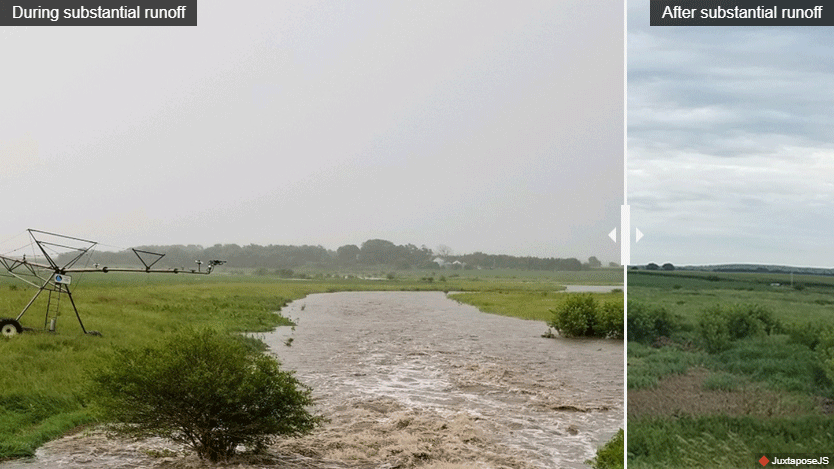 Funding is available from the Nebraska Buffer Strip Program for new and renewing projects. Filter strips and riparian forest buffer strips are eligible practices to receive up to $250/acre, depending on site conditions. Contracts can be for 5 to 10 years in length and allow for limited haying and grazing. Click here for more information and contact your local NRCS or NRD office to get started!
Funding is available from the Nebraska Buffer Strip Program for new and renewing projects. Filter strips and riparian forest buffer strips are eligible practices to receive up to $250/acre, depending on site conditions. Contracts can be for 5 to 10 years in length and allow for limited haying and grazing. Click here for more information and contact your local NRCS or NRD office to get started!
Buffers: Economic Considerations for your Least Profitable Acres
 The Nemaha Natural Resources District recently published an article showing how crop yields may be affected by adjacent by woodland riparian acres. These reductions were documented by using precision ag technology and are displayed on yield maps. Buffer strip practices, including those eligible in the Nebraska Buffer Strip Program, may be an option to consider. Annual rental incentives are offered for taking these less productive areas out of production. These practices are intended to serve, along with other practices in your field conservation plan, as a way to reduce sediment and agrichemicals from reaching surface water – a win-win alternative! Plus, these buffers serve as a physical setback which reduces the chance for drift to impact non-target sites, including the riparian area and aquatic habitat. These practices are also listed as a choice for mitigating drift and runoff risks to Nebraska’s endangered species and their habitat as part of EPA’s implementation of the Endangered Species Protection Program. See the article above for how filter strips and riparian buffer strips can help you meet label requirements near endangered species habitat.
The Nemaha Natural Resources District recently published an article showing how crop yields may be affected by adjacent by woodland riparian acres. These reductions were documented by using precision ag technology and are displayed on yield maps. Buffer strip practices, including those eligible in the Nebraska Buffer Strip Program, may be an option to consider. Annual rental incentives are offered for taking these less productive areas out of production. These practices are intended to serve, along with other practices in your field conservation plan, as a way to reduce sediment and agrichemicals from reaching surface water – a win-win alternative! Plus, these buffers serve as a physical setback which reduces the chance for drift to impact non-target sites, including the riparian area and aquatic habitat. These practices are also listed as a choice for mitigating drift and runoff risks to Nebraska’s endangered species and their habitat as part of EPA’s implementation of the Endangered Species Protection Program. See the article above for how filter strips and riparian buffer strips can help you meet label requirements near endangered species habitat.
Applicator's Map and Guide to Prevent Groundwater Contamination
 Pesticide and groundwater maps show relative leaching potential for pesticides in color-coded categories, and are available in PDF format for ALL counties in Nebraska. In addition, this page includes links to other tools for learning about the relative risk potential of pesticide products for making informed decisions to reduce groundwater contamination.
Pesticide and groundwater maps show relative leaching potential for pesticides in color-coded categories, and are available in PDF format for ALL counties in Nebraska. In addition, this page includes links to other tools for learning about the relative risk potential of pesticide products for making informed decisions to reduce groundwater contamination.
By Trevor Johnson, Noxious Weed, Seed and Hemp Programs Manager
Invasive species are everyone’s concern, and early detection is critical to mitigating their negative impacts and further spread. Invasive species can take on a variety of forms, including plants (both terrestrial and aquatic), bugs, mammals, reptiles, or nematodes. While some people devote their careers to finding and managing invasive species, it is often members of the public who serve as the first line of defense. Thus, this article serves as a call to action to everyone reading it to be a little more aware of the potentially invasive biota they see across Nebraska and to report them to the appropriate authority when they are found.
The first step is attempting to identify what you’ve found. The internet can be a great resource, but it’s not foolproof. There are several helpful plant identification apps such as iNaturalist, Google Lens, PictureThis, Nature ID, and Seek, just to name a few. The apps are not 100% accurate, but they will often help you narrow down the list of potential species. The Nebraska Invasive Species Council also has pictures and descriptions of many invasive species found in Nebraska or surrounding states: neinvasives.com/species. If you are unable to identify what you’ve found, that’s ok! Snap a couple of photos from different angles and note the location where you found it, using GPS coordinates, whenever possible. The next step is to report it.
Reporting what you have found is the basis for this call to action. With timely information, invasive species managers can address new infestations before they get out of control. It is often difficult to determine where to correctly report invasive species. However, the resources below are a great place to start and will be able to point you in the right direction.
State or county designated noxious weeds should be reported to the county weed superintendent for the county where they were found: neweed.org/Control.aspx
- Invasive terrestrial plants: Trevor Johnson, trevor.t.johnson@nebraska.gov or 402-580-5481
- Invasive aquatic species: ngpc.ais@nebraska.gov, 402-471-7602
- Invasive pests: Natalia Bjorklund, natalia.bjorklund@nebraska.gov or 402-471-6847
- The Nebraska Invasive Species Council is a great resource when you don't know where to report a sighting: invasive@unl.edu
 NDA encourages every person applying pesticides outdoors – from agriculture, turf and ornamental, and rights of way, to mosquito vector control – to register (for free) in the FieldCheck portal of FieldWatch. FieldCheck is the best way for you to know about commercial specialty crops, beehives, select row crops, and detasselers near your application area. Since product labels have and will continue to change to reduce damage to specialty crops, FieldCheck is a great tool to help you comply and reduce chances of damage to those crops and potential liability. FieldCheck not only allows you to receive updates when new information is added to the DriftWatch-BeeCheck map in your area, but you can also get the FieldCheck app (for free) so you have this information everywhere you go (available for Android and Apple).
NDA encourages every person applying pesticides outdoors – from agriculture, turf and ornamental, and rights of way, to mosquito vector control – to register (for free) in the FieldCheck portal of FieldWatch. FieldCheck is the best way for you to know about commercial specialty crops, beehives, select row crops, and detasselers near your application area. Since product labels have and will continue to change to reduce damage to specialty crops, FieldCheck is a great tool to help you comply and reduce chances of damage to those crops and potential liability. FieldCheck not only allows you to receive updates when new information is added to the DriftWatch-BeeCheck map in your area, but you can also get the FieldCheck app (for free) so you have this information everywhere you go (available for Android and Apple).
Many companies also have FieldWatch integrated in their mapping software. If not, have your employer contact FieldWatch to make this happen!
Corn and soybeans, regardless of herbicide traits, are now eligible to be mapped by using the DriftWatch portal. If you are both a grower and an applicator, two accounts are needed to take advantage of both features; as a grower in DriftWatch and as an applicator in FieldCheck.
Please contact Craig if you have questions (402-471-6883 or craig.romary@nebraska.gov).

Updated: Clarification on Use of Chlorpyrifos Insecticide Products in Food Crops for 2024-2025
See EPA’s FAQs on chlorpyrifos for more background, as well as tables of products that have been amended, cancelled, and amended or cancelled with the existing stocks provisions: Frequently Asked Questions about the Current Status of Chlorpyrifos and Anticipated Path Forward.
EPA Finalizes Cancellation of the Pesticide Dacthal
On Aug. 6, 2024, the U.S. Environmental Protection Agency announced the emergency suspension of all registrations of the pesticide dimethyl tetrachloroterephthalate (DCPA or Dacthal) under the Federal Insecticide, Fungicide and Rodenticide Act (FIFRA). This is the first time in almost 40 years the EPA has taken this type of emergency action, following several years to require the submission of long-overdue data and then assess and address the risk this pesticide poses. Subsequently, on Oct. 22, the EPA announced the cancellation of all products.
The EPA has taken this action because unborn babies whose pregnant mothers are exposed to DCPA, sometimes without even knowing the exposure has occurred, could experience changes to fetal thyroid hormone levels. These changes are generally linked to low birth weight, impaired brain development, decreased IQ, and impaired motor skills later in life, some of which may be irreversible.
The final cancellation prohibits anyone from distributing, selling, or carrying out other similar activities for the remaining pesticide products containing DCPA. It also means that no person can continue using existing stocks of those products. AMVAC has developed a voluntary return program for existing DCPA products. In advance of the cancellation order, AMVAC implemented a plan to identify existing stocks and coordinated a collection process. When the return program concludes in the fall of 2024, the EPA will continue monitoring this process to ensure that the collected DCPA products are disposed in a manner in accordance with applicable laws. The EPA plans to release additional information about any remaining stocks in the coming months.
For more information, please see Frequently Asked Questions about the Current Status of Dimethyl Tetrachloroterephtalate (DCPA or Dachtal) and Anticipated Path Forward
EPA Publishes New Resources on Bilingual Pesticide Labeling
The Pesticide Registration Improvement Act of 2022 (PRIA 5) requires the safety and health portions of pesticide product labels to be translated into Spanish. This effort advances environmental justice by making health and safety information on pesticide labels more accessible, fostering better understanding and compliance with label instructions.
Beginning Dec. 29, 2025, product labels on restricted use pesticide products and agricultural use products with the highest toxicity will be required to bear Spanish language translations for the health and safety sections. Following this first phase, pesticide labels must include these translations on a rolling schedule depending on the type of product and the toxicity category, with the most hazardous and toxic pesticide products requiring translation first. All pesticide labels must have translations by 2030. The translations must appear on the pesticide product container or must be provided through a hyperlink or other readily accessible electronic method.
The new and updated resources include guidance on implementation timelines of these bilingual labeling requirements for various types of pesticide products based on their toxicity, as well as frequently asked questions and answers related to these requirements.
The EPA wants to ensure the transition to bilingual labeling increases accessibility for pesticide users, pesticide applicators and farmworkers to make pesticides safer for humans and the environment. The EPA intends to update these website resources as various PRIA 5 requirements and deadlines are met, and new information is available. The resources will be available in English and Spanish on EPA’s Bilingual Pesticide Labeling Website.
NDA’s Pesticide Program welcomes four new pesticide and fertilizer teammates this fall. Please introduce yourself if you correspond with, speak to, or see them in the coming months.
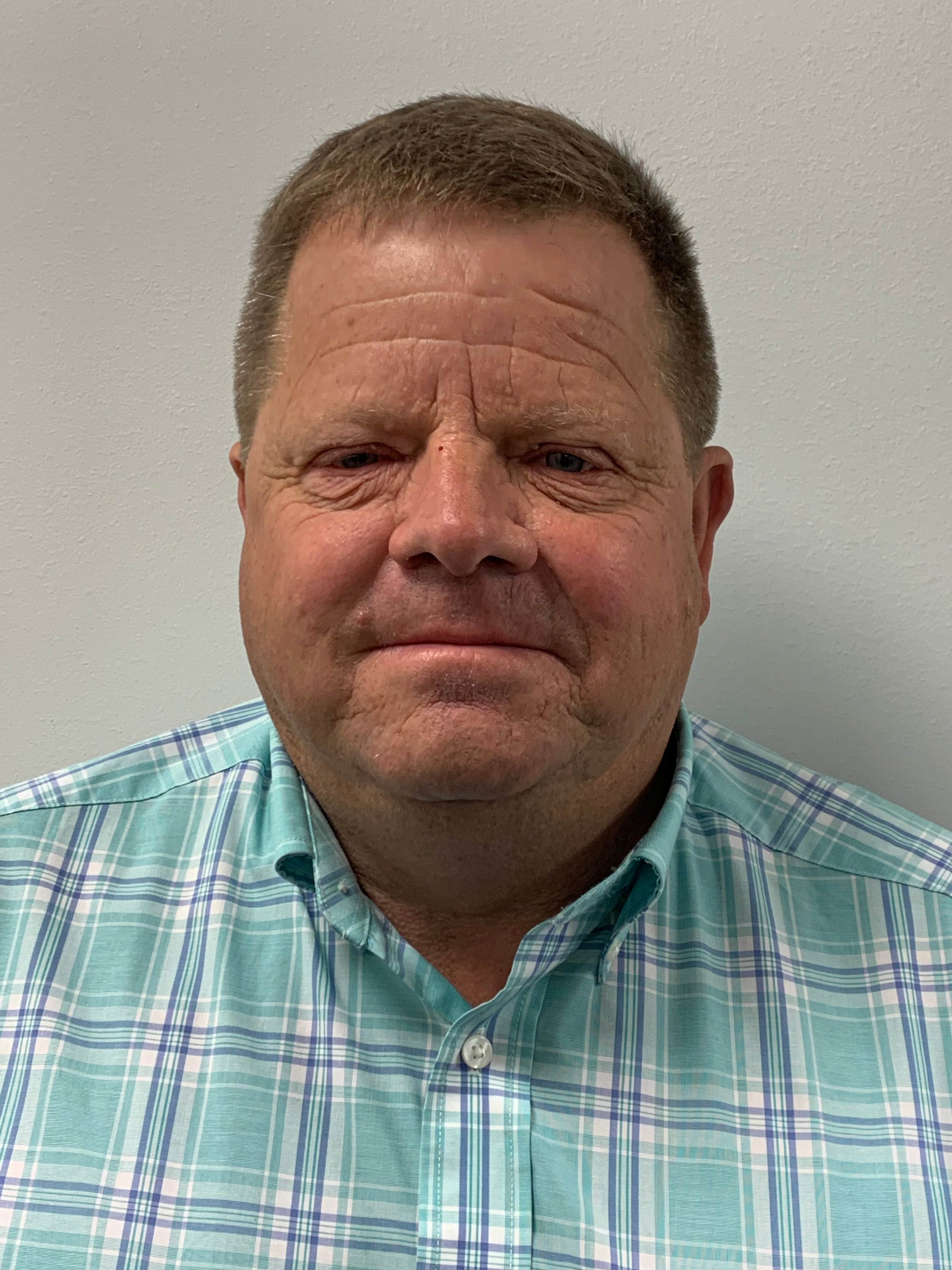 Welcome Mike Murren!
Welcome Mike Murren!
Last May Mike took over the position of Pesticide and Fertilizer Registration Specialist. Mike has experience working with the EPA during his time at the Lower Platte South Natural Resources District, specifically in the development of the Lake Wanahoo project, and as a producer himself. Since starting, Mike has handled all pesticide, fertilizer, and soil conditioner registrations in the state and has participated in national meetings and discussions around biostimulants. Mike and his expertise have been a wonderful addition to the team. When not working at the office or on the farm, Mike enjoys spending time with his children and grandchildren.
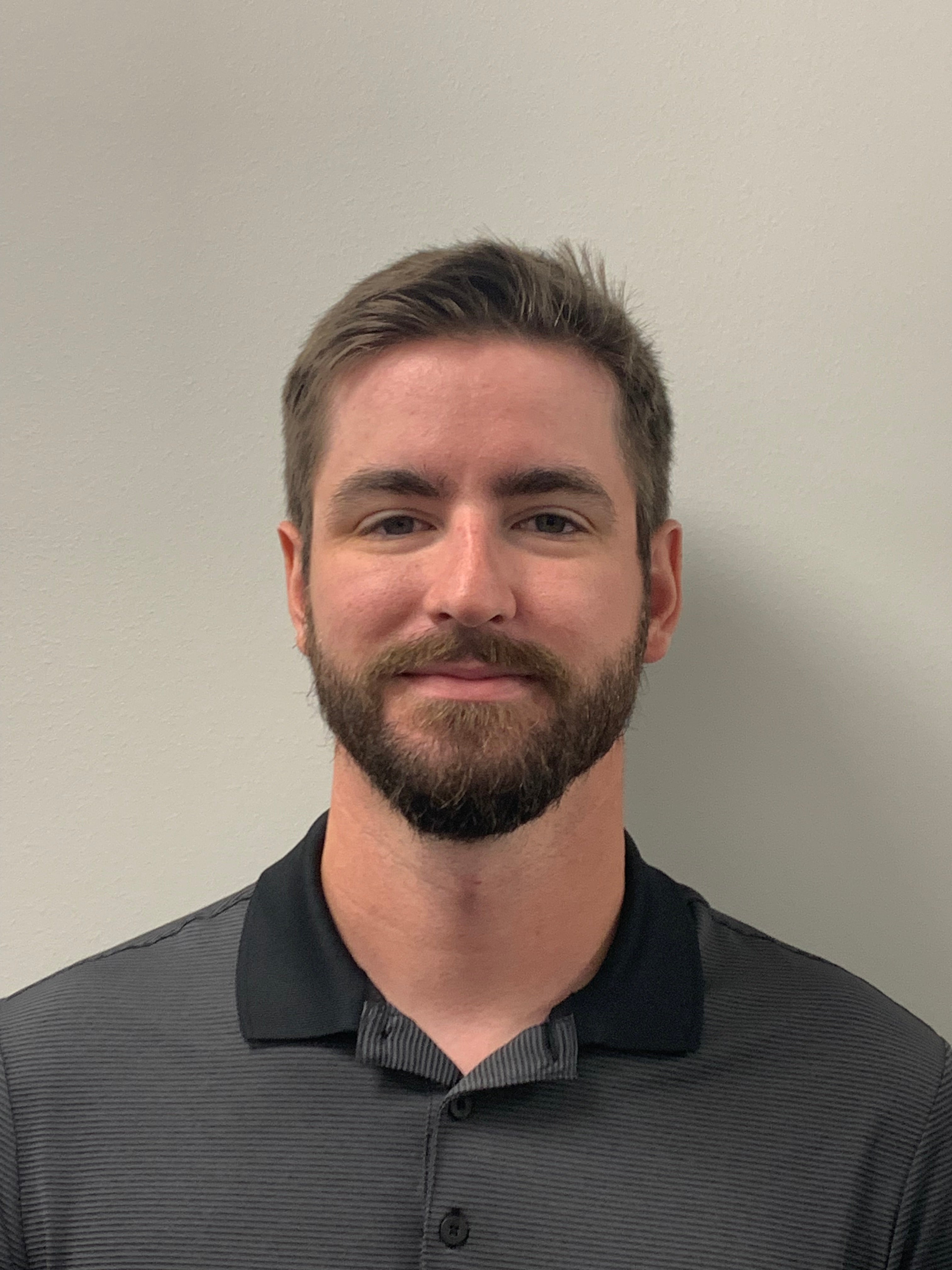 Welcome Jacob Ponec!
Welcome Jacob Ponec!
Jacob holds a bachelor’s degree from UNL and joins the team from the Nebraska Game and Parks Commission. Jacob covers the Omaha Metro territory and has a strong regulatory background which made it easy for him to transition into his current inspector position. When not working Jacob enjoys spending time outdoors with his wife and dog.
 Welcome Nathan Rios!
Welcome Nathan Rios!
Nathan filled the Southeast territory position after the retirement of Eric Fuentes-Ruiz. Nathan has a wide range of experiences from agriculture to sales, to analyzing highway crash reports, and he enjoyed his time learning the ends and outs of turf grass management which lead him to his current role with us. Nathan keeps busy in his free time coaching his girls’ softball teams.
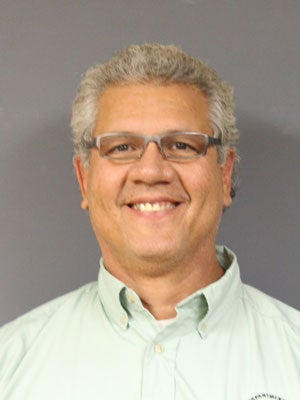 Congratulations to Eric Fuentes-Ruiz!
Congratulations to Eric Fuentes-Ruiz!
NDA would like to thank Eric for his 30 years of dedicated work to the people of the state and congratulate him on his retirement. Eric was the last of the original staff who started when the pesticide program began with NDA in 1993. Eric was the pesticide inspector for the Central region of Nebraska for most of his career before moving to Lincoln with his wife in 2018 to cover the Southeast region. Eric was not only dedicated in his own work but also served as a mentor to newer members of the team as his fellow colleagues retired. Congratulations, Eric, on a well-deserved retirement!
Job Opening!
The NDA Pesticide/Fertilizer Program will be announcing an opening for the North Central/Northeast Pesticide/Fertilizer Inspector position soon. Please be on the lookout for the opening announcement at Careers | Nebraska Department of Agriculture. Better yet, create an account at Nebraska State Careers. Once you are in your account, you can sign up for “job alerts” by picking your preferences on the types/job titles you’re interested in. Look for information and instruction on how to complete the job application.
- Drones and Herbicides: Are We There Yet? (Univ. Missouri)
- Nebraska Tick Surveillance (NE Dept. of Health and Human Services)
- Mosquitos in Nebraska (NE Dept. of Health and Human Services) – includes links to surveillance data and summaries
- NCIA a Longtime Partner with Nebraska Growers for Seed Certification (UNL CropWatch)
- Nebraska Seed Program (NDA) - to sample, inspect, and test agricultural, vegetable, and flower seed offered for sale for sowing purposes
- Using Precipitation Forecasts to Comply with Product Labels (NDA)
- Enlist Label Guidance for Determining Hydrologic Soil Group and Runoff Mitigation (NDA)
- Dicamba and Enlist page (NDA)
- Pesticide Technical Interpretation: Intermittent Streams (NDA)
- Weeds of the Great Plains (NDA) - hardbound book for purchase
- Remaining 2024 and 2025 IPM Webinars (US EPA) - for schools, community forests, invasive species, pollinators, greenhouses, and more. Also contains on-demand recordings on many topics
- Fall or Late Winter Applications of Preemergence Herbicides Rarely Provide Season-long Control of Crabgrass (Digitaria spp) in Nebraska (UNL Agronomy)
- Weed Watch Newsletter (Nebraska Weed Mgt. Areas)
- NDA Pesticide, Fertilizer, and Noxious Weed Newsletter archive
Department of Agriculture
Noxious Weed and Seed Program
402-471-2351
Trevor Johnson - Manager
Inspectors:
Nick Wordekemper - Northeast Region
Paul Moyer - Southeast Region
Tim Stortz - Southwest & Panhandle Region
This newsletter is posted on NDA's website here
Animal and Plant Health Protection Staff Directory
Department of Agriculture
Pesticide/Fertilizer Weed Program
402-471-2351
Libby Walsh - Manager
Holly Hillebran - Certification/WPS Training Specialist
Mike Murren - Pesticide and Fertilizer Registration Specialist
Craig Romary - Environmental Programs Specialist
Herbert Bates - Case Review Officer
Donene Lewis - Pesticide and Fertilizer Program Support
Aden Marshall - Pesticide and Fertilizer Program Support
Reva Richardson - Pesticide Registration Support
Inspectors:
Jacob Ponec - Omaha Metro Region
Vacant - Northeast Region
Nathan Rios - Southeast Region
Eric Trumbull - Panhandle Region
Aaron Ide - Southwest Region
Readers are free to reprint, in whole or in part, information in this newsletter. However, NDA respectfully requests the following citation be used:
Reprinted from the Nebraska Department of Agriculture’s Pesticide, Fertilizer & Noxious Weed Newsletter (www.nda.nebraska.gov)
Articles from other sources are often used in this newsletter and should be cited accordingly.
Sherry Vinton, Director
Craig Romary, Editor